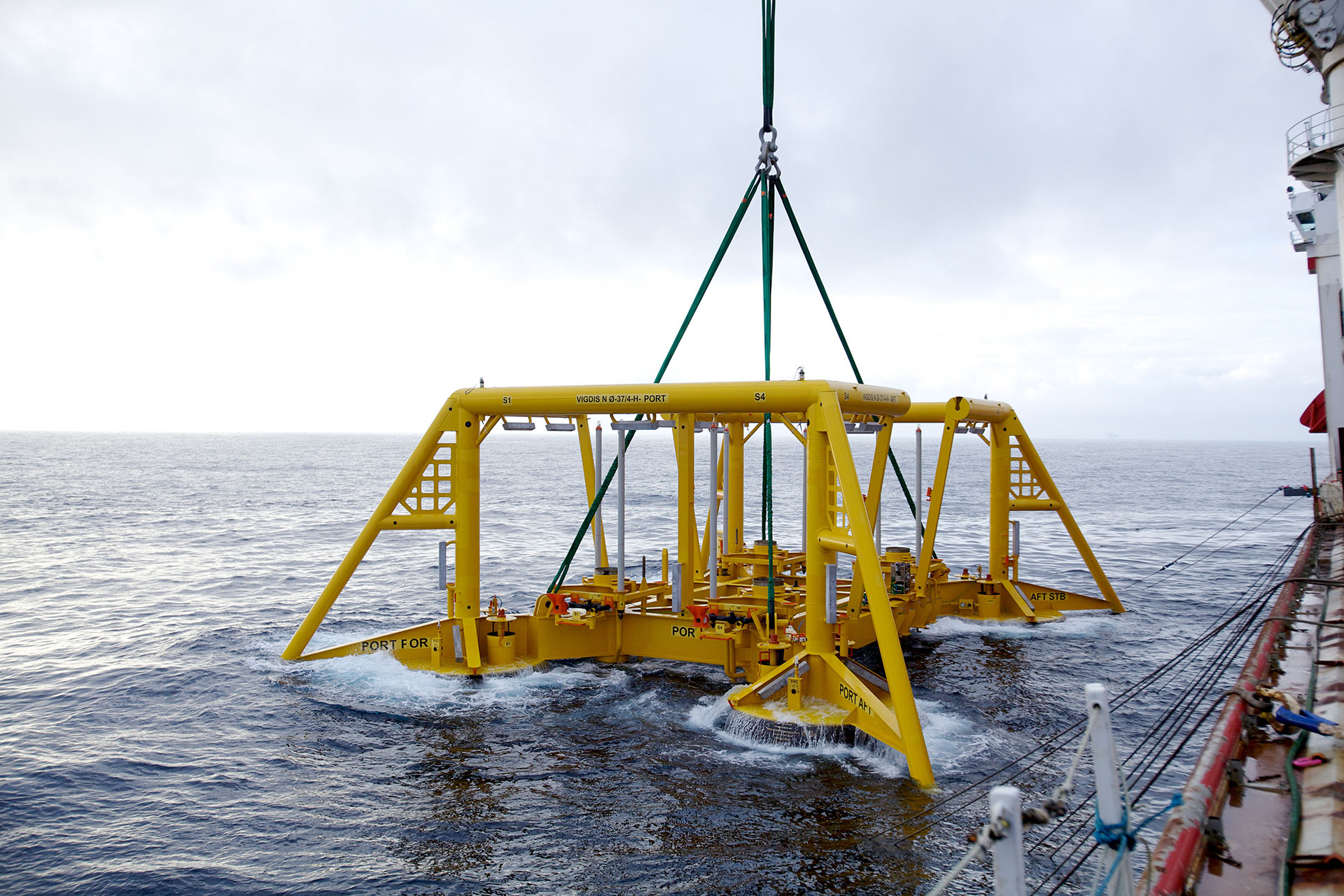Vigdis – a subsea development with substantial reserve growth
The PDO for Vigdis was approved in 1994 and the field came on stream in 1997. Reserves were originally estimated at 29 million scm of oil.
This field comprises several deposits and has been developed in various stages with seven subsea templates and two satellite wells tied back to Snorre A. Water delivered from Snorre A and Statfjord C is injected for pressure maintenance.
Reserves in Vigdis rose by more than 40 million scm in 2000-18 – an increase of almost 150 per cent. The plan for further development of the field, including new discoveries proven nearby, was approved by the government in 2002, and the PDO for Vigdis Nordøst received approval in 2011.
Twelve wildcat and appraisal wells have been drilled on Vigdis, four of them after the original PDO was approved. In addition come 47 development wells, including eight for observation, 27 for production and 12 for injection. An important precondition for the substantial reserve growth on Vigdis has been the existence of available capacity in the host field, Snorre.
The focus on sub-surface understanding and the constant search for new volumes have contributed to a steady increase in Vigdis reserves since 2000. Seismic surveys and good reservoir models have made it possible to identify new drilling targets for both production and injection wells.
Another important factor in keeping costs down is coordination benefits with Tordis, a subsea development in the same production licence. Joint drilling and intervention campaigns have provided opportunities to drill a number of wells and pursue more well maintenance, which have in turn increased reserves.
Vigdis provides a good example of a subsea development where the reserve base has been expanded gradually by adding new deposits to the field. Effective reservoir management of production and water injection are also important factors in increasing reserves. In order to improve recovery in a long future tail phase, a pump is to be installed on the seabed to raise pressure from the wells and thereby accelerate and increase production.

Figure 2.9 Installing one of the templates on Vigdis. Photo: Equinor.